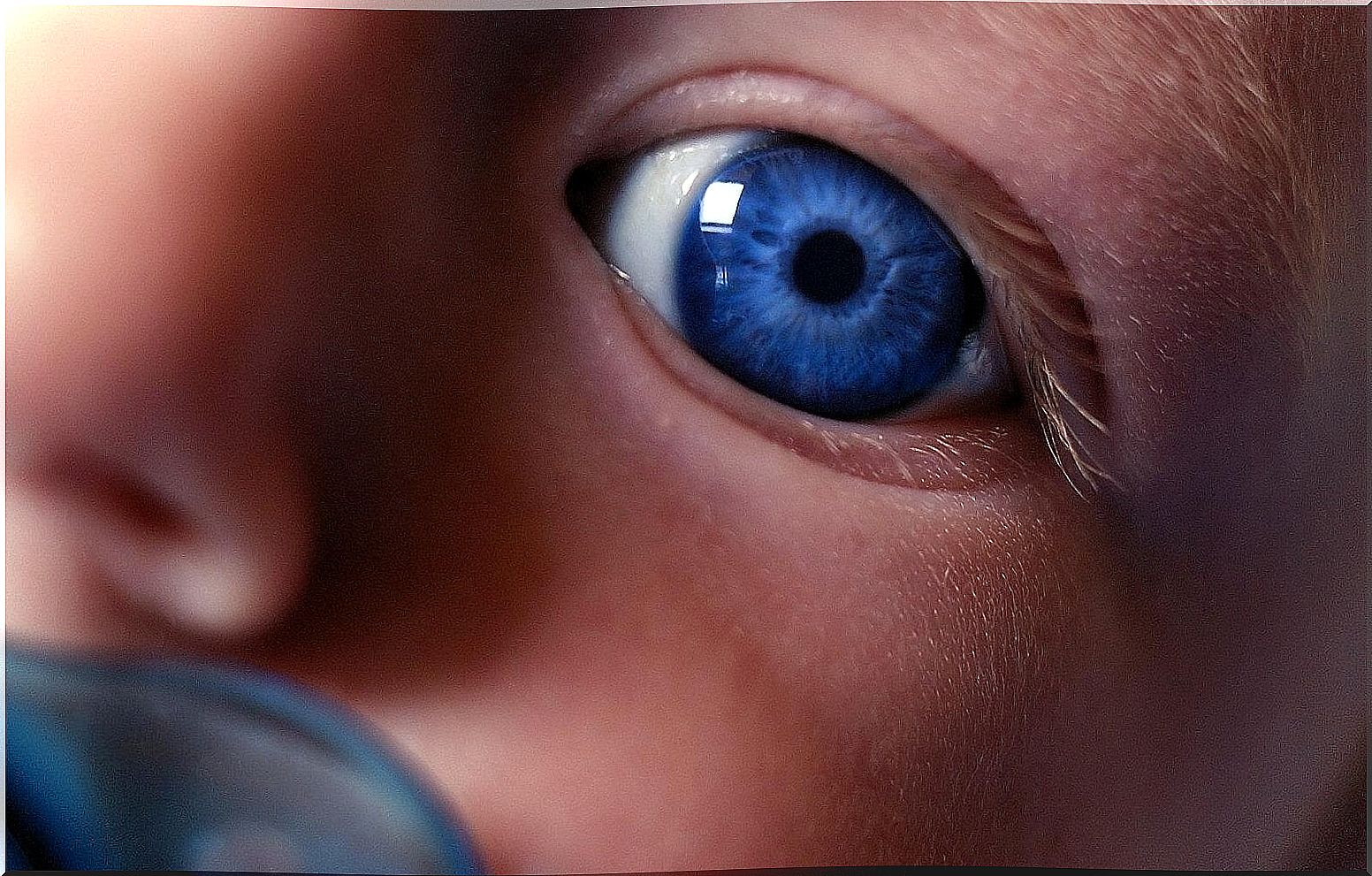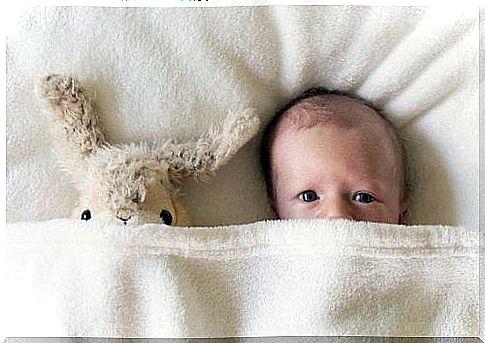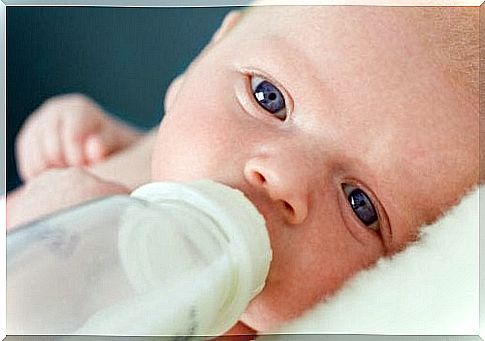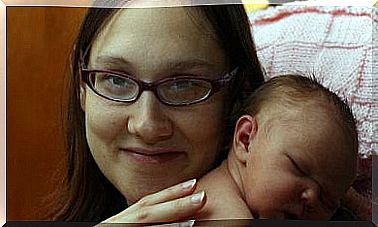Your Baby’s Eyes: When A Newborn Discovers You

Few moments are as beautiful as the moments when we make visual contact with our newborn. The moment you realize that your baby’s eyes are looking at you arouses several sensations. But what do they actually see? Can they make a difference between the face of the mother and other members of the family?
A baby’s eyes and vision are subject to various changes during the first 6 months of life. We need to be aware of every nuance, such as the way a baby can focus on certain objects. The eyes are an indispensable and wonderful channel through which children discover the world.
This will be nothing new to you. However, during the first weeks of life, they are only focused on two things that are essential to them: you and milk. Both represent survival. However, another fascinating phenomenon soon follows.
Your baby’s eyes will begin to recognize your face soon enough. As time goes by, he will start looking for you and will be even happier to see you. The instinct for survival is accompanied by the power of affection. A bond that will never be broken.
Today we invite you to discover the different visual aspects of a newborn.
I see your mama, because you’re close to me
In the genes of a baby it is determined that he likes to seek visual contact with people, especially his parents. Far away, newborns have very cloudy vision. They cannot see clearly objects further than 30 to 40 centimeters away.
This long-distance visual impairment has an important function during the first months of their lives. It’s a survival mechanism to keep stress and anxiety away and to focus on what really matters: the faces that are close and his mother’s breast or bottle.
Let’s look at more interesting details below.

A newborn quickly focuses on visual contact with its mother
- He looks at you, he sees you and he knows who you are. Few things are more important than allowing an intimate and prolonged encounter between the mother and child shortly after delivery. In this way the first visual encounter and skin-to-skin contact takes place. It also reduces stress and the first connection between mother and child is established.
- For a newborn, a face is full of fantastic stimuli. Sound comes from a mouth and eyes move in all directions. Together with the facial contours, the baby paints an image that is important for recognition.
It’s fantastic for babies.
My baby is squinting
Don’t panic, squinting is completely normal. During the first 6 months of life, the brain learns to focus and this process is evolving. It may not seem so, but this is very complex.
- It is common for babies to squint during the first 2 to 4 weeks of life. Their vision is still not very accurate. Parents sometimes panic when they see their baby squint.
- We must remember that most of a child’s visual development takes place in the brain and not in the eyes themselves.
- Therefore , it is a great challenge for the developing brain to properly coordinate the visual signals from both eyes. The nerve signals from both eyes make their way through the optic nerves and separate on both sides of the brain.
This is a very complex process that takes time to develop. Ultimately, each eye will be coordinated in the desired direction.

The biggest visual milestones
- After two months, we can enjoy the fact that our children can follow our faces. They can look at us between smiles. With great interest they follow toys that are moved from left to right.
- Between two and three months, a baby is able to distinguish between faces. From that moment on, he becomes frightened by faces he has never seen before.
- At this age he enjoys visual stimuli, such as the mobile above his bed. But because a baby’s attention span decreases quickly, they are happy with any new and fun stimulation you offer them.
- The next visual milestone occurs when they are six months old. At that point, coordination in both sides of the brain is at an optimal level.
- Children are very curious from now on. They look, search and discover. Most importantly, their coordination is now perfect. We can cover one eye and they will look for a stimulus with their other eye. Do not hesitate to consult a pediatrician or ophthalmologist if your baby still looks cross-eyed after 6 to 7 months or if his eyes sometimes make cross movements.
The color of your baby’s eyes
There is a well-known myth. One that we have heard many times before. We have been told that our newborn’s blue eye color is due to the fact that he is still breastfed.

- There is no scientific evidence to support a claim like this. It’s simply not true. The color of the iris, like that of the hair and skin, depends on a protein called melanin.
- When a baby is born, it is common for your baby’s eyes to be gray or blue because they stayed in the dark for a long time. The melanocytes were not yet mature at that time. This process takes time and will change day by day.
- This maturation process and whether or not eye color changes develop differently in each child. This depends on the genes. But after about 6 months, the final color begins to manifest. A process that continues until they are a year or two old.
In conclusion, few things are as magical as the moment we realize our baby is looking around and looking at us. He knows that we are an important person to him and that he needs us. Little by little he discovers more and more things about us and about the world around him.
Don’t neglect taking care of your baby’s eyes. Do not hesitate to ask a good pediatrician for advice if you notice a small deviation.









